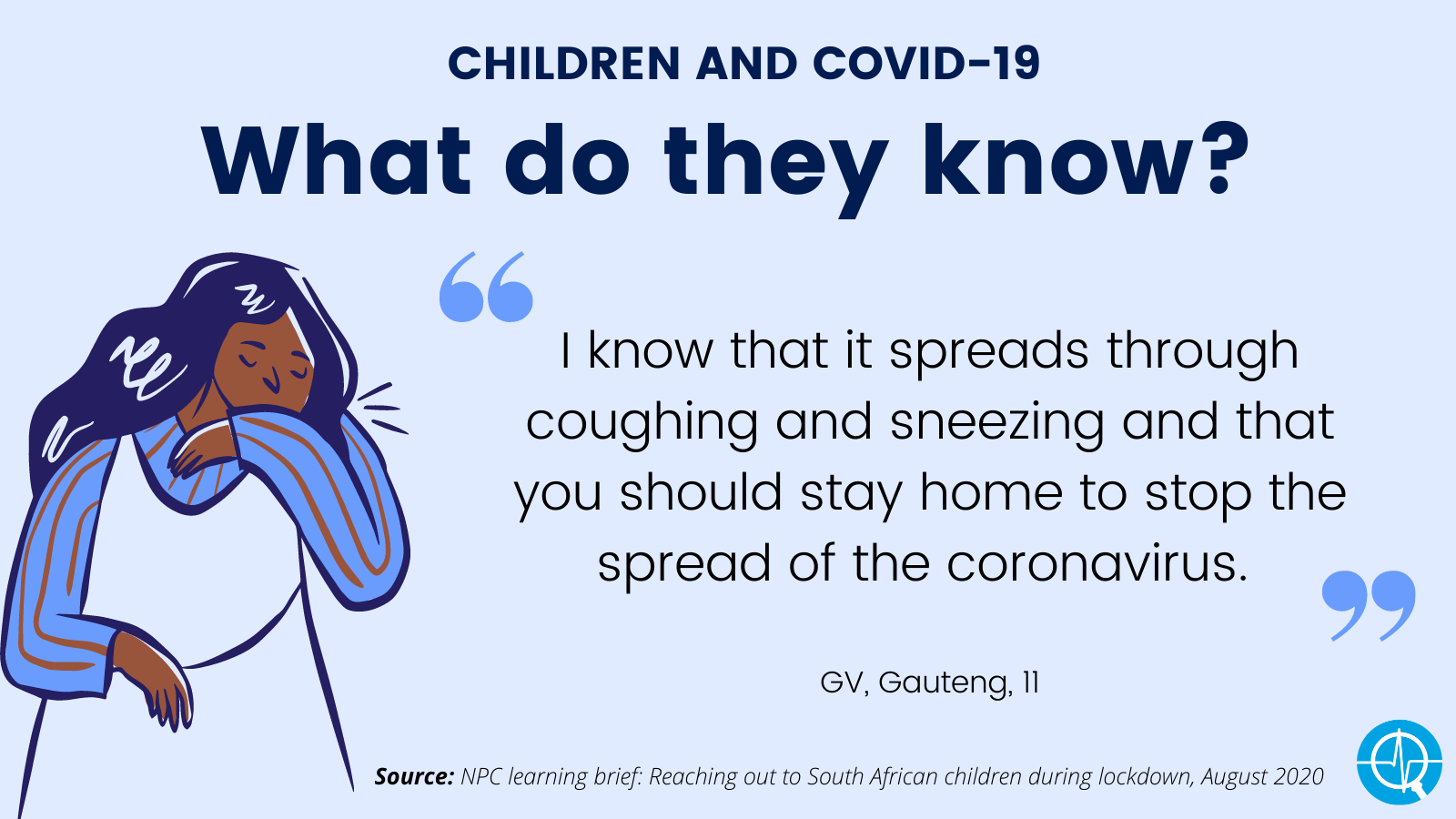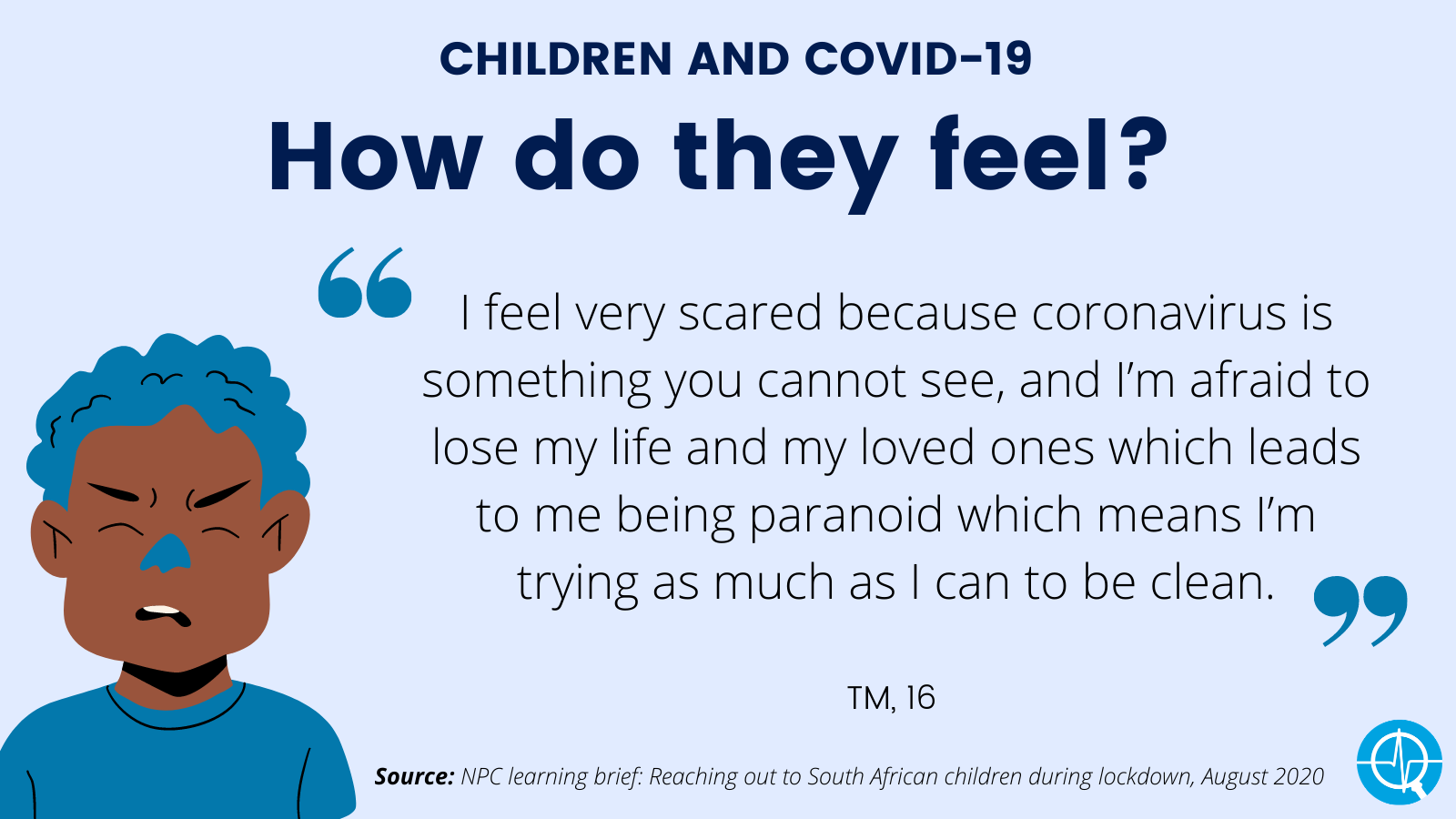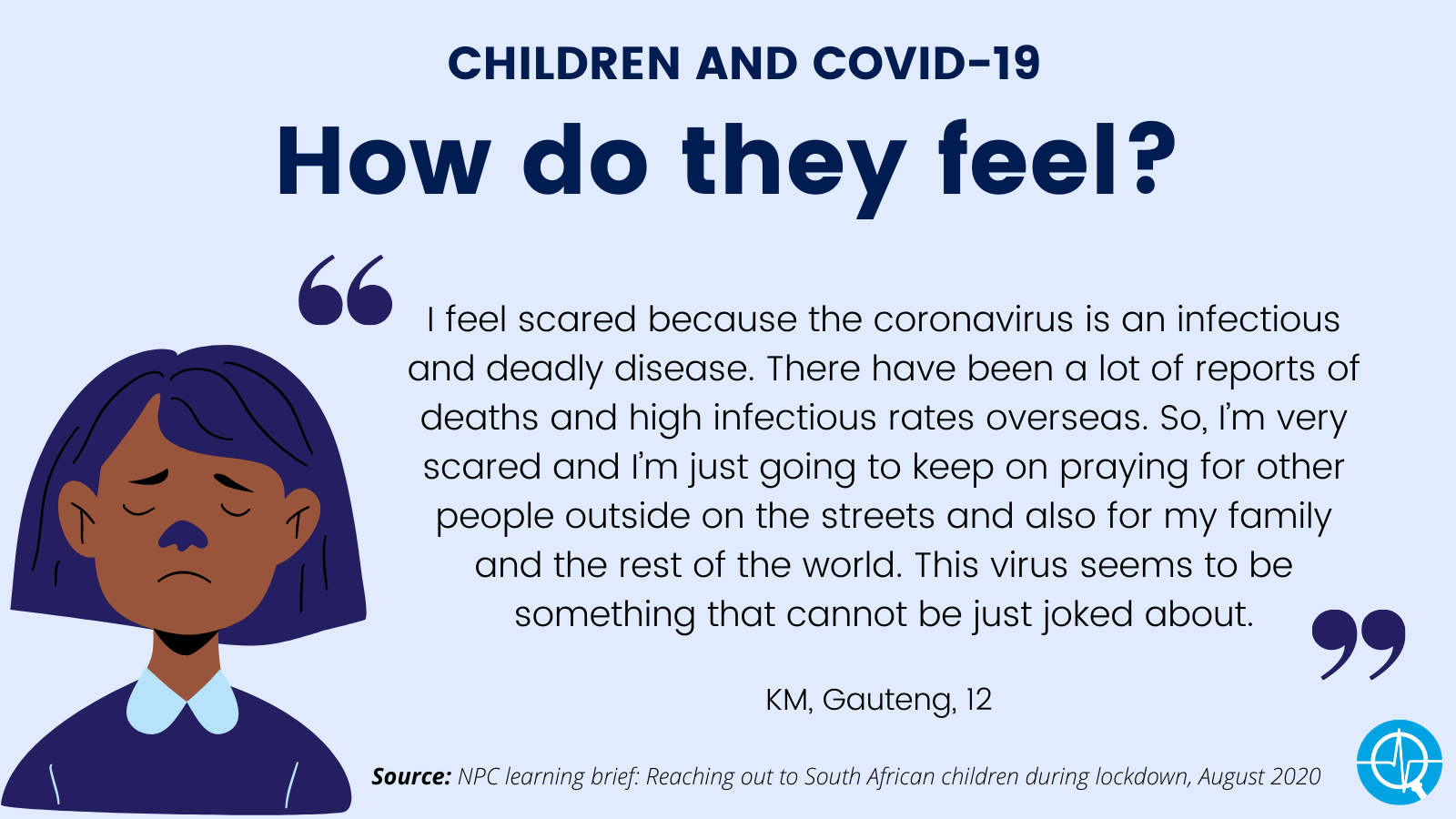- The new coronavirus has changed a lot about our lives and children haven’t been spared.
- Warnings about the coronavirus just before South Africa’s lockdown in March 2020 may have scared children and teens and contributed to misconceptions about the outbreak.
- Find out how the youngest members of society feel about life during lockdown, and how we can better tailor our COVID messaging for them.
This year’s first day of school looked markedly different for South Africa’s learners. No running up to friends and greeting them with hugs and stories about the December break. Instead, little ones queued to get their temperatures checked — observing the physical distancing protocols of course — and friends and classmates were greeted with something we’ve all come to know: the elbow bump.
The new coronavirus has changed a lot about our lives and children haven’t been spared.
How can parents understand the risks children face and better speak to them about COVID? We look at how this group has been faring in lockdown and how adults could be more helpful.
Are children at a high-risk of developing COVID-19?
Globally, studies have found that SARS-CoV-2 (the virus that causes the COVID-19 disease) affects adults and people younger than 19 differently.
But does the same apply in South Africa? — Yes, according to a special report on COVID-19 infections among people younger than 19 years old. The report was published in January by the National Institute for Communicable Diseases (NICD).
The public health surveillance and research body looked at data it received from private and public labs testing for SARS-CoV-2 infection. It also analysed hospital admission data from the online system DATCOV — a platform that allows public and private hospitals to submit daily admissions data for public health surveillance and research. An analysis of this data confirmed the findings of similar international studies on COVID’s impact on children.
The study does come with limitations, however, which should be considered when looking at the results.
Firstly, asymptomatic cases would not be included in the data together with people who had COVID-19 but weren’t tested.
Information on underlying medical conditions children and teenagers had would also be incomplete, since researchers rely on hospitals for this type of data.
Lastly, the reason people were admitted to hospital often isn’t reported. This information would help researchers distinguish between people admitted for isolation or to treat COVID-19 disease.
The data showed that, compared to adults, children and adolescents 19 and younger:
- Have an almost six times lower incidence of laboratory confirmed COVID-19 cases. This means young ones are less likely to be infected with SARS-CoV-2.
- There was no significant increase in infections among children when schools reopened.
- Should they be infected with the virus, they’re less likely to develop severe disease.
- This age group is hospitalised less often than adults. The study reported an incidence of COVID-related hospitalisation 14 times lower than that for adults in the same period.
- Should young ones be hospitalised, however, they’re less likely to die from COVID-19. The study found that, of those with information about their treatment outcomes, close to 3% of children and adolescents in hospital died. Comorbidities — having one or more underlying medical conditions — increased the risk of death for children. The most commonly documented comorbidities among children who died were HIV (21.9%) diabetes mellitus (18.8%), and TB (14.1%), the data shows.
What do children understand about the new coronavirus?
- Children understand that COVID-19 is a respiratory disease.
- They can name a number of symptoms associated with the disease including tiredness, dry cough, sore throat, sneezing and headaches.
- Children know the virus was first detected in China and that it spread across the world, but they have little knowledge of previous outbreaks.
- They also know that it was necessary to stay home for a while to stop the virus from spreading and that people needed to wash their hands, sanitise, wear masks and social distance.
This is all according to a small study conducted among people 18 and younger in South Africa published in August 2020.
The survey of 142 children and adolescents was conducted by South Africa’s National Planning Commission (NPC) between 15 April and 20 May 2020. Participants were asked to explain what they knew about the new coronavirus, who spoke to them about COVID, how they felt about it and the country’s lockdown measures and to explain what they were doing during the lockdown. While the study isn’t nationally representative, it does help provide a glimpse of children’s experiences, feelings and activities during South Africa’s lockdown.

The report also highlights some of the misconceptions and gaps in understanding that children hold about COVID.
Many of the surveyed children believed, for example, that “the virus makes people sneeze blood, cough blood and blood comes out of the eyes and ears”. What’s more, some children believe that there are “dire consequences for those infected” with the disease, with prospects of recovery rarely mentioned, the report found.
Messaging matters
Warnings which over-emphasised the dangers of COVID before South Africa went into hard lockdown could be a culprit for these misconceptions, the NPC’s report found.
While the messaging may have helped justify measures like lockdown it may have also “scared people, especially children, into a fear response”. This has consequences for children’s mental wellbeing, the report argues. Messaging like this could affect how children reintegrate into public settings like schools after lockdown.

“It’s not that children don’t hear the ways in which we communicate about COVID,” Christina Nomdo told Bhekisisa. Nomdo serves as a commissioner on the NPC and was recently appointed the Western Cape’s Commissioner for Children — a position which advocates for children’s rights in policy.
Nomdo adds: “The biggest change needs to come from adults.”
Adults fail children when we don’t provide them with the appropriate message, Nomdo argues. “We often disregard children because we think they don’t understand what’s happening around them, but they do. They watch the President’s speeches too. It’s the adult’s responsibility to answer their questions. They should not need to decode the speech for themselves.”

How can parents help their children to understand COVID & lockdowns?
Maria Van Kerkhove, an infectious disease epidemiologist and the World Health Organisation’s technical lead on its COVID-19 response, gave her advice on how to talk to children about COVID-19. This includes:
- Acknowledging the fear
- Breaking that fear down to its nuts and bolts — “what is it that is actually scaring you?”
- Being honest about what you do and don’t know
- Providing reassurance
- Making time for play
“We do also need child friendly messaging,” Nomdo says. “For example using animations with children in them that tell a story about the virus and its effects.”
That’s just what Nathi Ngubane did. He’s an illustrator in South Africa who believes effective COVID messaging should also be representative.
Ngubane is the creator of a series of books about the coronavirus pandemic in South Africa called Duma Says. The books follow a young boy, Duma, as he learns about COVID. In response to the pandemic Duma, his friends and family “make masks, build an outdoor school and learn to play games while socially distancing”.
Set in an unnamed informal settlement, the books represent a reality that many children in South Africa live in, but don’t often see reflected back to them in the media.
“The books are unique in that they are an attempt to tell the story of the pandemic through the eyes of children living in cramped and impoverished circumstances” the books’ publishers Social Bandit Media write about it.
“I wanted to make sure that the books were bright and friendly and colourful,” Ngubane says of the books.
“I wanted everyone who read the books to feel empowered. That it was possible to be safe and inventive. I didn’t want to add more fear.”
The Duma Says books have been translated into isiZulu, isiXhosa, Kiswahili and braille.
All three of the books are available for free download and to read online on the publisher’s website.
Gopolang Makou was the impact and engagement officer at Bhekisisa.





